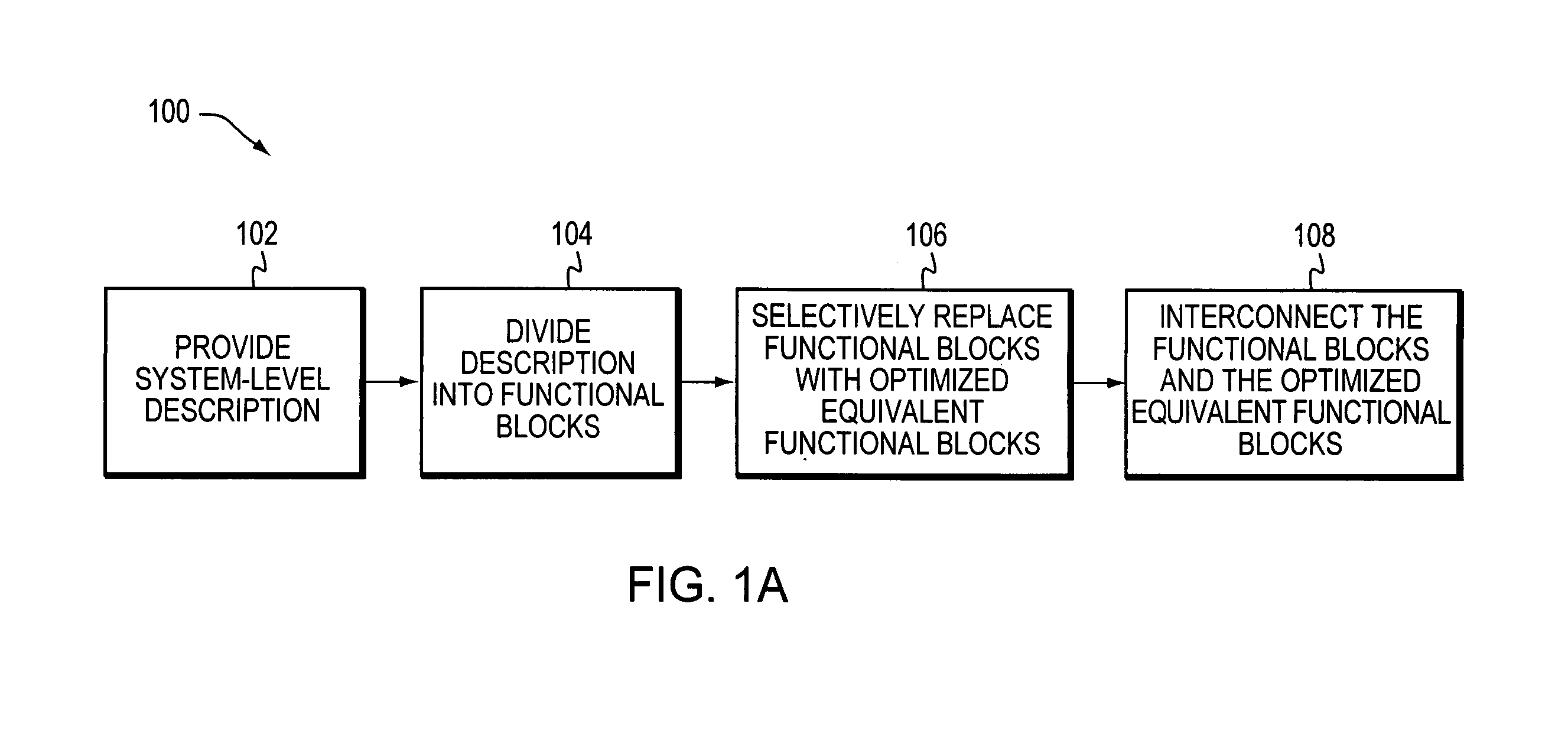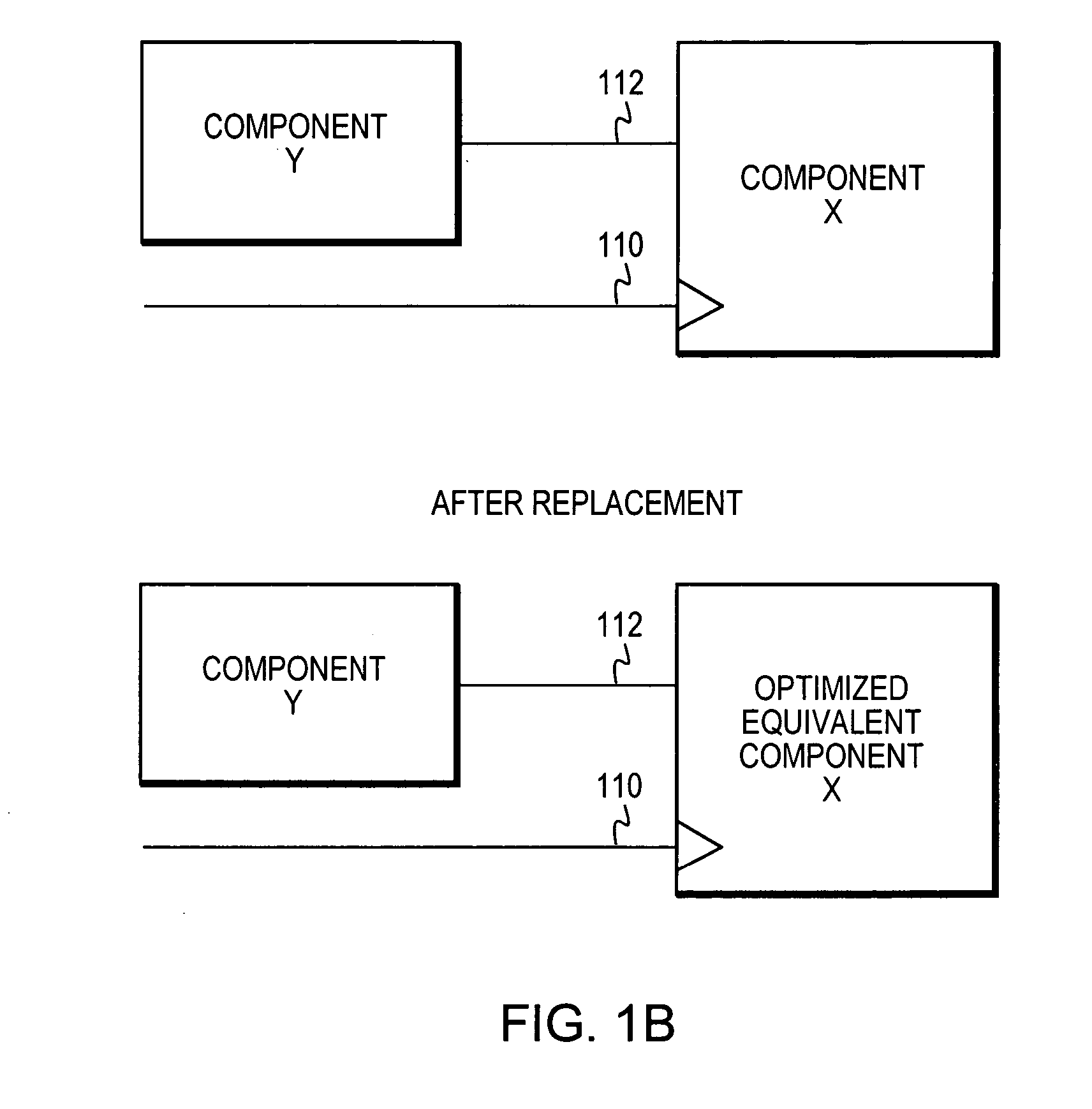Generating an optimized system-level simulation
a system-level simulation and optimization technology, applied in the field of hardware simulation, can solve the problems of delay in software design and testing, time-consuming and expensive process of producing electronic devices, and inability to develop software, so as to improve the overall simulation efficiency
- Summary
- Abstract
- Description
- Claims
- Application Information
AI Technical Summary
Benefits of technology
Problems solved by technology
Method used
Image
Examples
Embodiment Construction
[0022] Simulating an entire system, down to the transitions performed on each pin of each component of each device, generally requires substantial sacrifices in simulation efficiency. Every clock cycle, each device must check to see if its inputs have changed and if it must compute new outputs based on previous or current inputs. In efficient simulations of these systems, devices need not necessarily process their respective inputs on every clock edge. For example, a system may consist of a central processing unit (CPU) and a number of peripheral components that provide interface functionality. When the CPU is not interacting with a particular peripheral component, e.g., when the CPU is performing an internal calculation or interfacing with another component, a non-active component may be generally ignored and not have its clock or other inputs changed. Therefore, until the CPU is either providing inputs to the non-active component or requesting outputs from it, the component genera...
PUM
 Login to View More
Login to View More Abstract
Description
Claims
Application Information
 Login to View More
Login to View More - R&D
- Intellectual Property
- Life Sciences
- Materials
- Tech Scout
- Unparalleled Data Quality
- Higher Quality Content
- 60% Fewer Hallucinations
Browse by: Latest US Patents, China's latest patents, Technical Efficacy Thesaurus, Application Domain, Technology Topic, Popular Technical Reports.
© 2025 PatSnap. All rights reserved.Legal|Privacy policy|Modern Slavery Act Transparency Statement|Sitemap|About US| Contact US: help@patsnap.com



